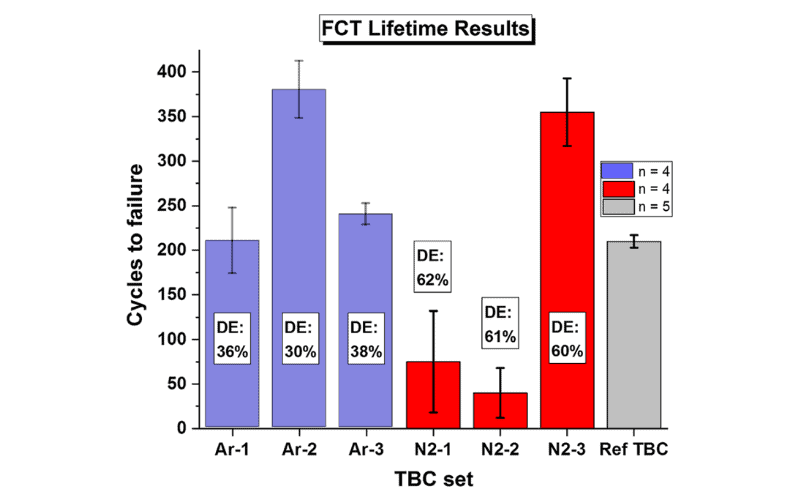November 13, 2019
Environmental, Economical, and Performance Impacts of Ar-H2 and N2-H2 Plasma-Sprayed YSZ TBCs
Since the 1970s, the Ar-H2 plasma has been the standard air plasma spray (APS) gas system employed to deposit ZrO2-Y2O3 (YSZ) thermal barrier coatings (TBCs) for the gas turbine industry, particularly regarding the legacy plasma spray torches. Although much less costly and yielding higher YSZ deposition efficiency (DE) levels, N2-H2 plasmas did not become the mainstream plasma system. This N2-H2 issue likely occurred due to problems like preliminary APS torch Cu-nozzle erosion (Cu contamination on TBCs) and the tendency to produce denser coatings, potentially leading to TBCs exhibiting higher thermal conductivity (TC) and lower thermal cycle lifetimes. However, in the twenty-first century, environmental footprint reduction and economical aspects are becoming paramount. In addition, the introduction of new technologies (e.g., tungsten-lined Cu nozzles, particle T&V sensors, and computer-controlled automation) has dramatically increased the stability and reproducibility of APS processing. Therefore, the N2-H2 plasma concept needs to be revisited with respect to the legacy plasma spray torches, which are still highly used by the gas turbine industry original engine manufacturers and service centers worldwide. In this paper, different sets of APS YSZ TBCs were deposited via Ar/H2 and N2/H2 plasmas using the legacy 3MB APS torch. The DE, TC, and furnace cycle test (FCT) were evaluated. The best FCT-performing Ar-H2 and N2-H2 TBCs exhibited equivalent lifetimes. Moreover, the best FCT-performing N2-H2 TBC demonstrated a 100% increase in DE and an overall 55% reduction in production cost when compared to the best FCT-performing Ar-H2 TBC. Finally, the TC values at room temperature and 1200 °C of best FCT-performing N2-H2 TBC were within the range of those of Ar-H2 TBCs.
Key words: APS, Ar-H2, deposition efficiency (DE), environmental footprint, N2-H2, TBC, thermal conductivity, thermal cycling (FCT), YSZ
Originally published at Journal of Thermal Spray Technology (13 November 2019, Volume 29, pages 74–89, 2020)
By Rogerio S. Lima, Bruno M. H. Guerreiro, Nicholas Curry, Matthias Leitner, Karl Körner
